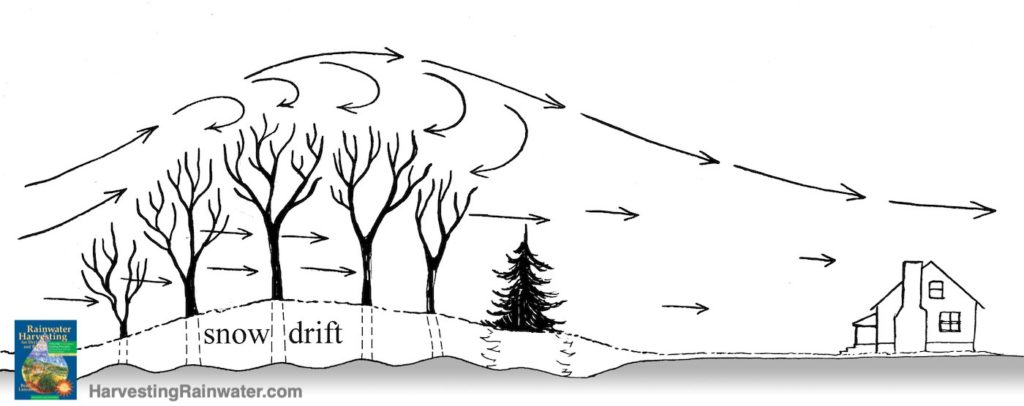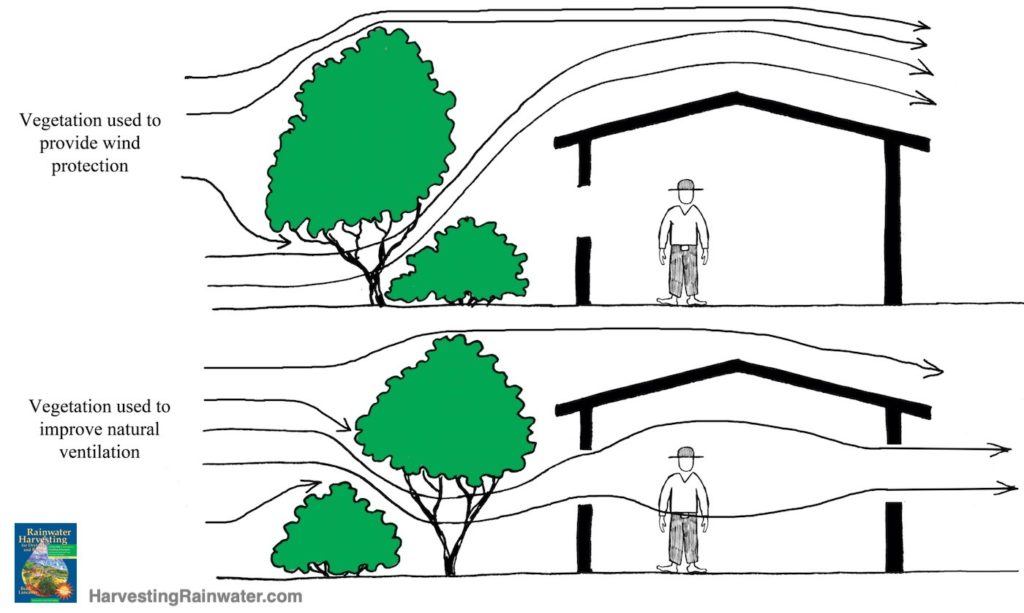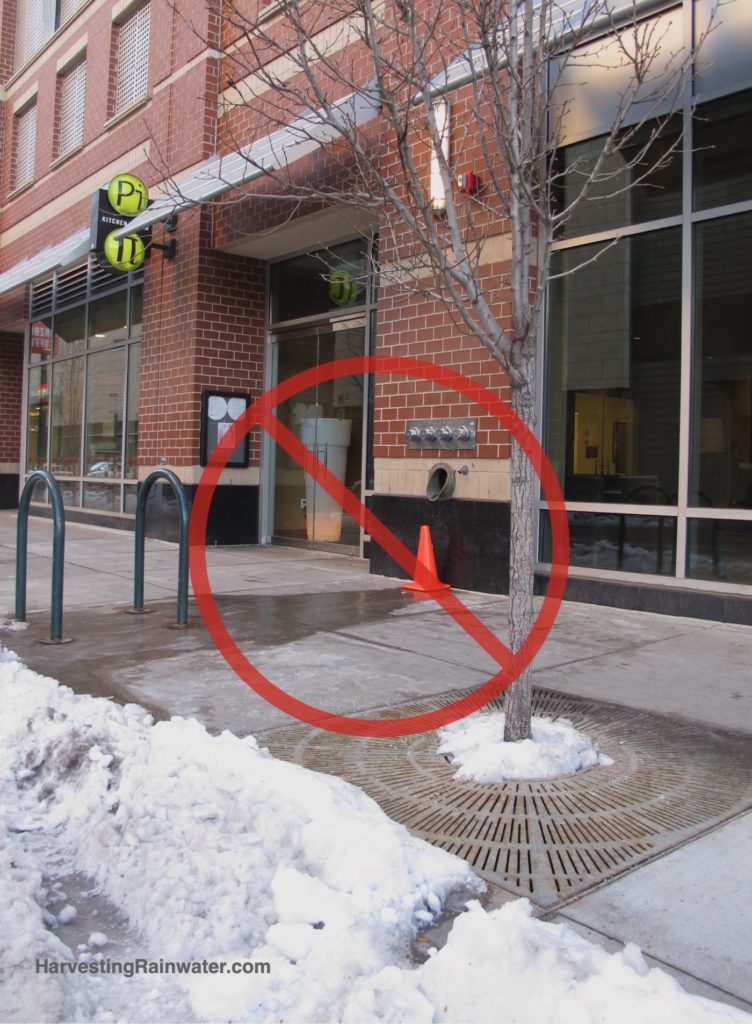Volume 1
In Volume 1 see appendix 8: Wind Harvesting: Basic Airflow Relationships, Site Selection, Wind Pumping and Wind Power, Natural Ventilation, Windbreaks, and Snow- and Biomass-Drift Harvesting
Well-placed and spaced vegetation or even a fence can create a windbreak or shelterbelt that slows wind speeds, allowing the snow, rain, organic matter, and/or top soil and fertility it carries to drop out and be harvested within or beside the shelterbelt—which can then support greater health and growth of the shelterbelt and that which it protects by deflecting the strongest winds over a downwind garden, orchard, pasture, playground, road, or home.
The resulting snowdrift of accumulating snow around the trees of a well-designed windbreak/shelterbelt, then melts—more than doubling the annual moisture available to the vegetation. Furthermore, the reduced wind speeds reduce water loss to evaporation, both within, and downwind of, the shelterbelt. And evaporative water loss is reduced still more within in the shade of a shelterbelt – most notable where the hot afternoon sun is shaded out (see the Sun & Shade Trap examples in chapter 4 of Rainwater Harvesting for Drylands and Beyond, Volume 1, 3rd Edition).

But if a windbreak/shelterbelt is too dense, or incorrectly spaced from that which it is trying to protect, it could produce eddy currents that form a snowdrift where you don’t want one, such as atop your house, road, or driveway.
Vegetation and built structures can also be arranged to enhance/increase air flow for passive cooling and ventilation. This consumes no power, nor the water consumed in the generation of electricity or production of fossil fuels.



In Volume 1 see appendix 8: Wind Harvesting: Basic Airflow Relationships, Site Selection, Wind Pumping and Wind Power, Natural Ventilation, Windbreaks, and Snow- and Biomass-Drift Harvesting

In Volume 2 see the Harvesting Windswept Snow case study in chapter 3 and Snow Diversion Berms case study in chapter 9